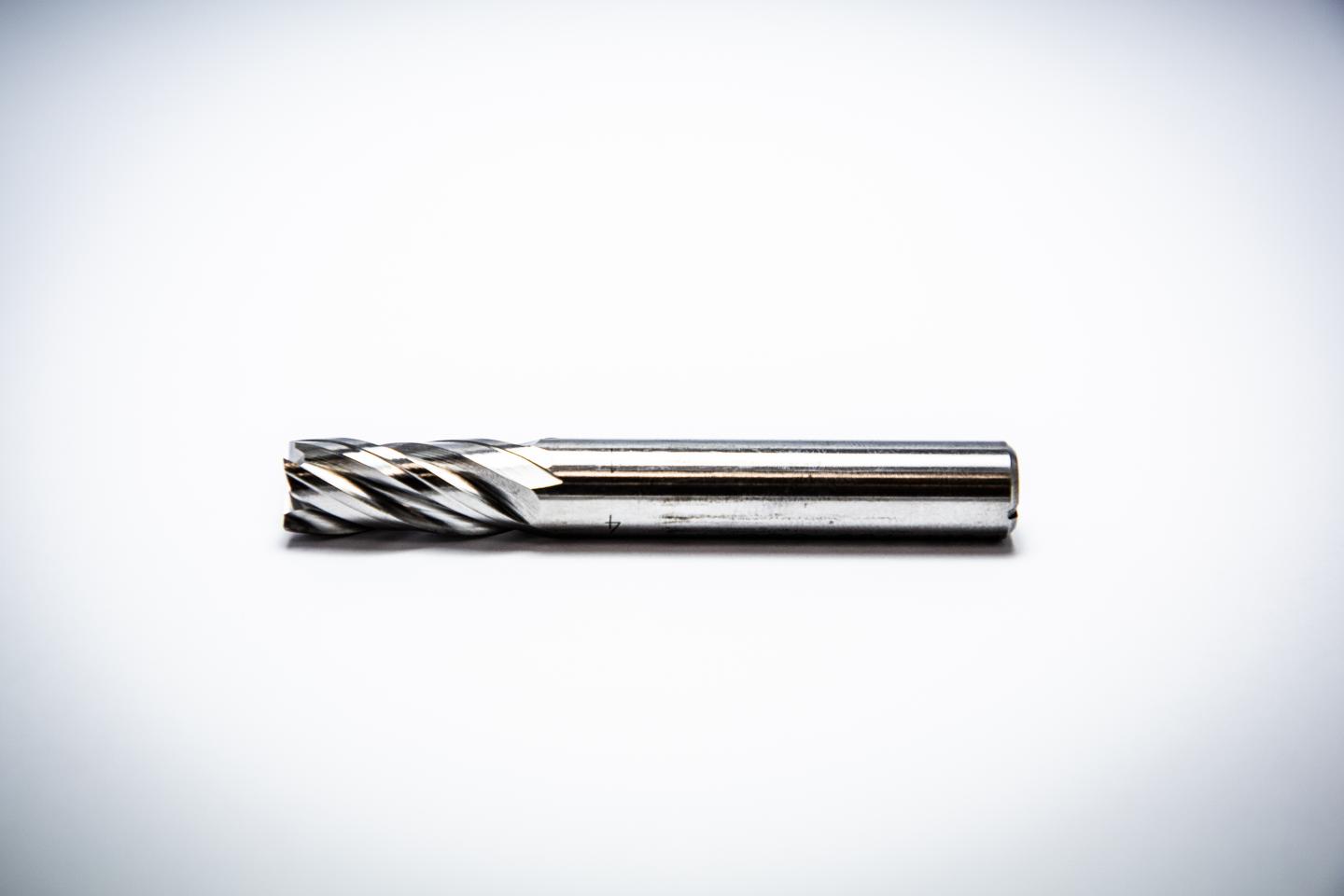3D printing is walking its path slowly but surely into the field of aerospace and defense manufacturing. Due to the demands of high performance and rigorous precision, every step given in this direction has to be crafted to the detail to achieve perfect execution.
Jimmy Tonton, a PhD candidate from RMIT University of Melbourne, Australia, has achieved important progress in this field by developing high-quality cutting tools than can now be 3D printed. For this research, Toton has partnered with the Australian Defence Materials Technology Centre (DMTC) and industry partner Sutton Tools. The outcome of this collaboration is a set of steel milling cutters able to cut through Titanium alloys with the same or at times better results than conventional steel tools.

This is the high-performance steel milling cutter 3D printed by RMIT researchers. Credit RMIT University
Because the high resistance of metals used for aerospace and defense, creating an efficient cutting tool is quite challenging and expensive. The strength and high-quality execution required to perform those cuts let us imagine the numerous difficulties that Toton had to overcome to achieve a successful design. The milling cutting tool has to be strong enough to cut through metal while keeping the layers resulted from 3D printing unified and all its parts built strong enough to avoid cracks. It also must be finished to a very smooth surface roughness in order to remain functional.
The set of milling cutters represent the first convincing demonstration of 3D printed steel cutting tools that can cut strong metals. Toton’s work is a clear demonstration of the technology´s potential achievement for the development of 3D printing tools. Consequently Toton has been awarded the 2019 Young Defence Innovator Award and $15,000 prize at the Avalon International Airshow.
The technology used to make the milling tools is Laser Powder Bed Fusion, also called Laser Metal Deposition, Selective Laser Melting and Direct Metal Laser Sintering. Which is an additive manufacture process in which metal powder is fed onto a metal base and a laser beam melts the material added forming a metal pool that layer by layer forms the object. This technique lets the object to be built with complex internal structures and demanding external surfaces. Although as we know metal 3D printing processes require several finishing and post finishing steps in order to work well. These may include tumbling for several days, HIP, precipitation hardening, shot peening and other steps.
Some of the potential that this project holds are improvements in productivity, time-saving in tool making, costs savings, reduction of material waste and the possibility of creating tools that fit a very specific purpose and in so doing overcoming supply chain constraints. This is all good news for manufacturing. Toton is now working towards establishing a print-to-order capability for Australia’s advanced manufacturing supply chains.
“Manufacturers need to take full advantage of these new opportunities to become or remain competitive, especially in cases where manufacturing costs are high,”
“There is real opportunity now to be leading with this technology.”
DMTC Chief Executive Officer, Dr Mark Hodge, said:
“Supply chain innovations and advances like improved tooling capability all add up to meeting performance benchmarks and positioning Australian companies to win work in local and global supply chains,” he said.
“The costs of drills, milling cutters and other tooling over the life of major Defence equipment contracts can run into the tens, if not hundreds, of millions of dollars. This project opens the way to making these high-performing tools cheaper and faster, here in Australia.”
Sutton Tools Technology Manager, Dr Steve Dowey, said:
“This project exemplifies the ethos of capability-building through industrial applied research, rather than just focusing on excellent research for its own sake,”
RMIT’s Advanced Manufacturing Precinct Director and Toton’s supervisor, Professor Milan Brandt, said:
“Additive technology is rising globally and Jimmy’s project highlights a market where it can be applied to precisely because of the benefits that this technology offers over conventional manufacturing methods,”
Tooling and cutting tools may not be the first thing that you think of when coming up with 3D printed products. This showcase of their use indicates just how versatile 3D printing can be. Toton has shown us that parts that are not traditionally thought of as high value are still mission critical enough to 3D print in costly metal printing processes. We expect many more people to apply metal 3D printing to metal and polymer consumables and tools in the coming years.
Subscribe to Our Email Newsletter
Stay up-to-date on all the latest news from the 3D printing industry and receive information and offers from third party vendors.
You May Also Like
3D Printing Unpeeled: New Arkema Material for HP, Saddle and Macro MEMS
A new Arkema material for MJF is said to reduce costs per part by up to 25% and have an 85% reusability ratio. HP 3D HR PA 12 S has been...
3D Printing News Briefs, January 20, 2024: FDM, LPBF, Underwater 3D Printer, Racing, & More
We’re starting off with a process certification in today’s 3D Printing News Briefs, and then moving on to research about solute trapping, laser powder bed fusion, and then moving on...
3D Printing Webinar and Event Roundup: December 3, 2023
We’ve got plenty of events and webinars coming up for you this week! Quickparts is having a Manufacturing Roadshow, America Makes is holding a Member Town Hall, Stratafest makes two...
Formnext 2023 Day Three: Slam Dunk
I’m high—high on trade show. I’ve met numerous new faces and reconnected with old friends, creating an absolutely wonderful atmosphere. The excitement is palpable over several emerging developments. The high...
































